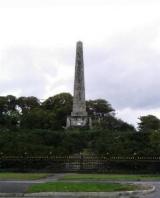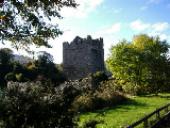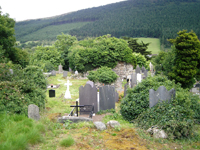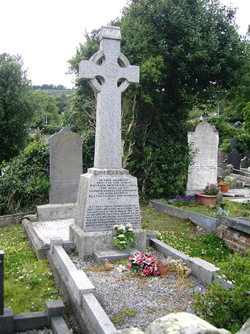| |
|
Send
Images of Rostrevor as E-cards |
|||||
 many old gravestones, one
of these commemorates the Irish giant Patrick Murphy born 15th
June 1834 on a farm near the Cassey Water, he is said to have
been eight feet one inch (2.464 M) tall, well proportioned and
handsome. It is thought that at this time Patrick was the tallest
man in the world. many old gravestones, one
of these commemorates the Irish giant Patrick Murphy born 15th
June 1834 on a farm near the Cassey Water, he is said to have
been eight feet one inch (2.464 M) tall, well proportioned and
handsome. It is thought that at this time Patrick was the tallest
man in the world.
He joined a travelling circus
and when in Marsilles, Along the coast road to Warrenpoint a 100 ft obelisk was erected in 1826 to one of Rostrevor's most famous sons Major General Robert Ross he was born at Carrickbawn now Rostrevor house. He led troops who captured Washington and burnt the White House during the war of 1814. He was subsequently killed in the advance on Baltimore, and was buried in Halifax Nova Scotia. You can explore the area around Rostrevor in more detail on the Killowen Historical Society website. Read about Rostrevor from Samuel Lewis' Topographical Directory of Ireland (1837) |
|||||
|
Read
about Rostrevor
from Thomas Bradshaw's Directory of 1820 |
|




